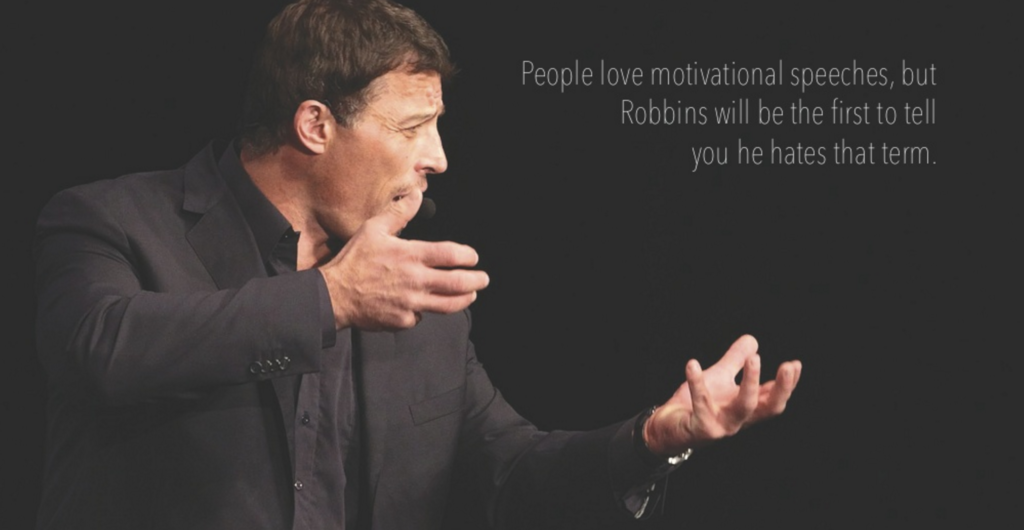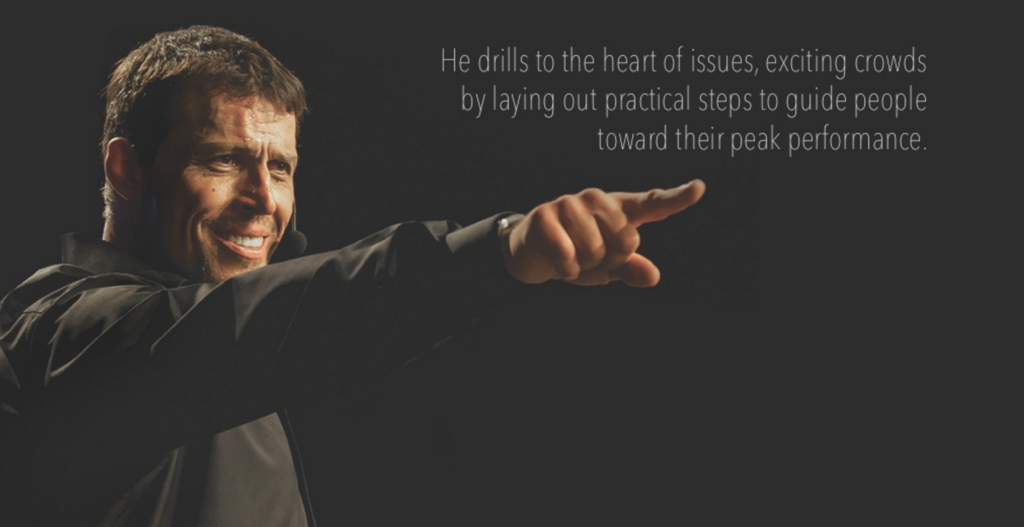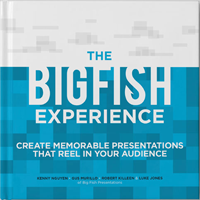6 Ways Tony Robbins Masters Public Speaking
This blog is written from the perspective of Kenny Nguyen.
Over the weekend, I had a chance to watch Tony Robbins’ new special on Netflix, I Am Not Your Guru. I watched it again the next day… Then again, a couple of days later.
It was that good.
Besides the captivating messages on how to better one’s self, and the heartwarming stories featured, Robbins truly exemplified what it takes to be a world-class presenter (if you haven’t seen it yet, do yourself a favor and check it out).
While I did take some great notes on the human development side, it was the presentation of Robbins’ material that got me hooked, jotting down notes on his presentation style. It’s truly wonderful to see how he took fulfilling content and executed it on an experience-based level. Inspired, I thought to share my notes for those interested in developing speaking habits that can help them succeed and perform at extraordinary levels:
Prepare physically and mentally.
- Robbins starts his mornings out in a cold pool to energize and awaken his body and mind hours before the presentation. On top of this, before he even goes on stage, he performs voice and breathing exercises, meditation practices, and trampoline jumps to further awaken his body and mind for the performance. Robbins knows his performance is a strenuous activity and has habits to better prepare him for succeeding on stage. What habits prepare your body and mind for presentation game day?
- Takeaway: Find the habits that help get your mind and body ready. Treat your presentation like an athlete would treat a big game. Go exercise and find mental rituals that get your mind focused (here are some tips that can help). If you’re able to find these unique habits, your preparation will speak for itself on game/speech day.
Invest in audience research.
- Robbins spends a lot of time prior to his events (and even during events) to research what the audience wants. This is a very important practice every presenter should follow. After all, the audience is innately selfish. They are there to build themselves, not to build YOU. Give them what they want and they will praise you for it. Give them what you think they want and you run the risk of wasting their time. What are you doing to make sure your audience’s needs are satisfied?
- Takeaway: Treat your presentation like a campaign. Research beforehand through event organizers or attendees on what audience members expect to get out of your speech (this can be done with a simple questionnaire or survey). Capitalize on your research by applying audience expectations to the content in your speech. Utilize specific examples in your speeches (like a specific audience member) for maximum engagement and to show the audience that you did do your homework.

Engage right away.
- From the moment he steps on stage, Robbins finds opportunities to engage with his audience through his masterful use of bonding and rapport (a common technique of great presenters that exemplify C.O.U.R.A.G.E). On a macro level, he gets the audience to chant “aye” when one of his points resonates with them. On a micro level, he uses his prior research on certain audience members to engage with them and attack issues they face in their life (this inspires other audience members, as his message is applied universally, yet tailored to a specific person). This approach is one of the secrets that help keep everyone engaged for hours on end in his seminar. Is your audience part of your presentation, or are they just watching it?
- Takeaway: Break monotonous content by engaging with your audience in an authentic way that allows them to be a part of the conversation. If there’s a chance for an audience member to share a story or experience that relates to your speech, consider taking it. The more involved you can get your audience, the more they’ll feel as though you’re on their side and have their best interests in mind.
Master your energy effectively.
- Energy is contagious. Robbins exudes energy and empowers others by using his positivity and realness. However, there’s a time and place when energy matters most. Imagine if you’re hanging with a person that’s upbeat ALL the time. They’ll most likely wear you out fairly quickly with their positivity. Robbins opens his presentations with energy but spreads out this energy during certain times by controlling his body language, tone, and pace. How do you utilize your energy level to make it impactful?
- Takeaway: Control your energy with your body language, tone, and pace. If you need help doing this, record yourself presenting and see if you come off as genuine or inauthentic during energetic parts your speech. Watching yourself can help you determine how much is too much.
Content first, visuals second.
- Robbins combines multiple different activities into his presentation that make it not seem like, well, a presentation. There are over-the-top lights, music, and fog machines that liven up the entire experience. Combining these factors along with Robbins’ oratory prowess makes the seminar feel more like a giant church event than a typical seminar. This is all intentional, as it leaves a lasting impression. It’s important to note that Robbins and his staff are by far the most memorable impressions here. Their engagement and attention to the audience creates a setting of openness and decisiveness between everyone. This is the secret of making memorable presentation experiences: knowing that people will always remember the presenter more than the presentation. How do you want the audience to remember you?
- Takeaway: Without Robbins and his team, the event would be hollow. Their attentiveness and engagement with audience makes a difference. For you this means that, instead of focusing on the most beautiful slide deck and music combination in the world, focus on crafting an amazing message that your audience is dying to hear. Only after you’re confident in that message should you break out the fog machine, music, and lights.

Be genuine.
- Tony regularly utilizes his vocal and body language. With vocal language, he speaks in a way that is direct and difficult to misunderstand. With body language, he is able to use open posture to exude confidence, reflect his understanding, and mimic certain audience members. Despite there being thousands of people in the room, you still feel connected directly to him in an approachable and relatable way. How do you exude vocal and body language in your presentations?
- Takeaway: Be simple and direct in your words, while also being open and relatable in your body language. This is a great way to build bonding and rapport with the people around you (your audience).
In case you haven’t noticed, I have great admiration for Tony Robbins as a public speaker. He’s raw, direct, focused, intense, and engaging. Truth be told, he’s a downright force of nature when he presents, as he’s able to help people become more decisive on critical decisions during his speeches.
As we sadly and realistically know, we may not all be Tony Robbins when on stage. However, imitating him shouldn’t be our goal. We can learn from his great habits in how he executes his experience-like performances. Just remember that the biggest secret of the best presenter is that they constantly work to be the best versions of themselves. Like one of Robbins’ big messages, YOU are the best version of yourself. No one can take that away from you.
Master the best version of yourself and you will be on your way inspiring others. I look forward to writing that blog post about you then!




Share your opinion.